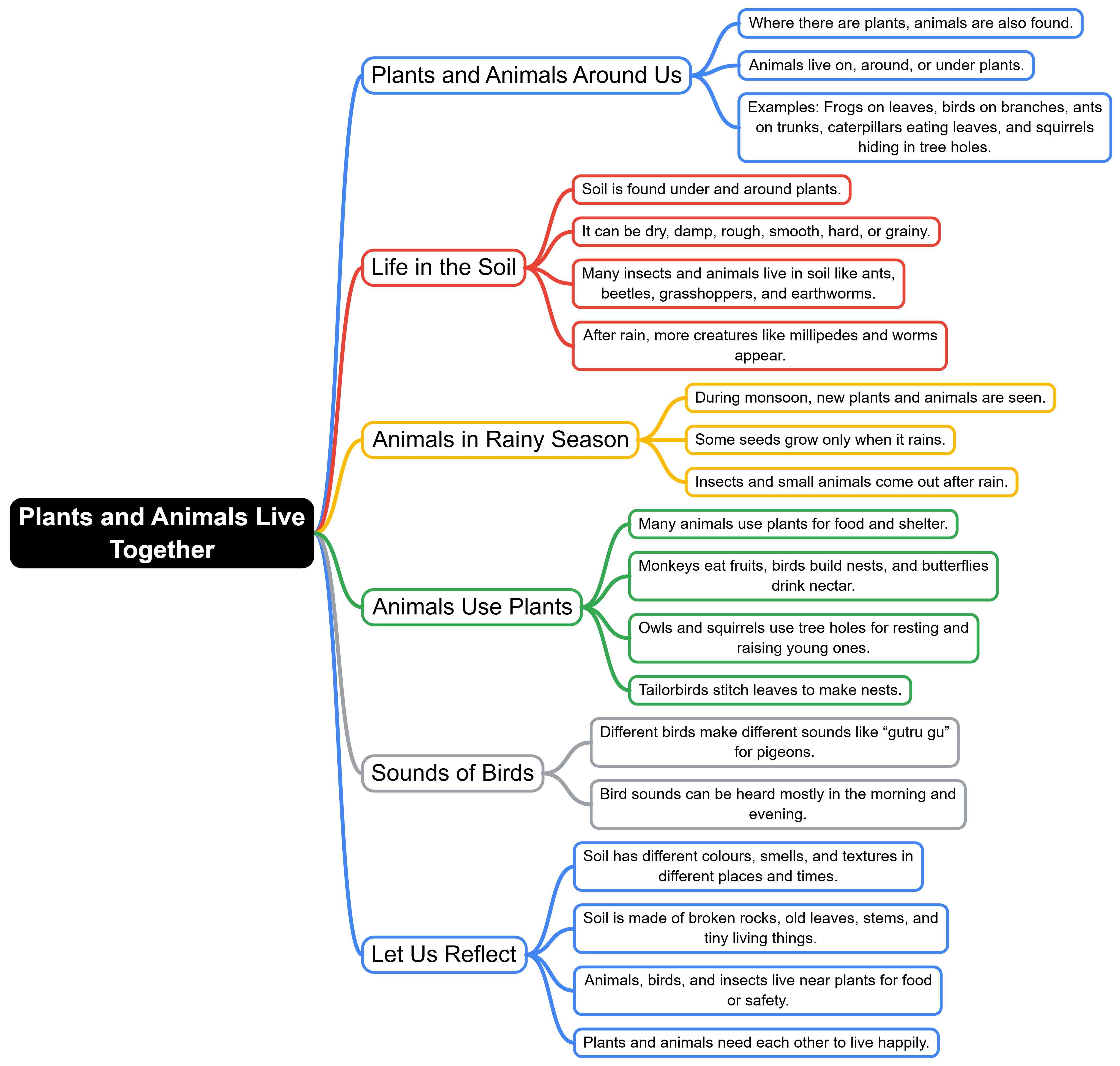Class 3 Exam > Class 3 Notes > EVS Class 3: The World around us (Our Wondrous World) > Mind Map : Plants and Animals Live Together
Mind Map : Plants and Animals Live Together | EVS Class 3: The World around us (Our Wondrous World) PDF Download

The document Mind Map : Plants and Animals Live Together | EVS Class 3: The World around us (Our Wondrous World) is a part of the Class 3 Course EVS Class 3: The World around us (Our Wondrous World).
All you need of Class 3 at this link: Class 3
|
30 videos|128 docs|14 tests
|
FAQs on Mind Map : Plants and Animals Live Together - EVS Class 3: The World around us (Our Wondrous World)
| 1. What are some examples of how plants and animals rely on each other in their ecosystems? |  |
Ans.Plants and animals depend on each other in many ways. For example, bees and other insects pollinate flowers, allowing plants to reproduce. In return, plants provide food and nectar for these pollinators. Another example is how herbivores eat plants for energy, while predators help control the populations of these herbivores, maintaining balance in the ecosystem.
| 2. Why is it important for plants and animals to live together in an ecosystem? |  |
Ans.Plants and animals living together creates a balanced ecosystem. This balance is crucial for the survival of species. Plants produce oxygen through photosynthesis, which animals need to breathe. Additionally, plants provide food and habitat for many animals. When these interactions are disrupted, it can lead to a decline in biodiversity and ecosystem health.
| 3. How do animals help in the growth and spread of plants? |  |
Ans.Animals play a significant role in the growth and spread of plants through processes like seed dispersal. For example, many animals eat fruits and later excrete the seeds in different locations, allowing new plants to grow far from the parent plant. Some animals also help break down organic matter, enriching the soil and promoting plant growth.
| 4. What are some adaptations that plants have developed to live alongside animals? |  |
Ans.Plants have developed various adaptations to coexist with animals. Some plants have thorns or bitter-tasting chemicals to deter herbivores from eating them. Others have bright colors and fragrances to attract pollinators. Additionally, some plants have evolved to grow in places where animals can help them, like in nutrient-rich soils after animal droppings.
| 5. How do environmental changes affect the relationship between plants and animals? |  |
Ans.Environmental changes, such as climate change, deforestation, and pollution, can significantly affect the relationships between plants and animals. For instance, if a habitat is destroyed, animals may lose their food sources, leading to population declines. Similarly, if the climate changes, plants may not be able to survive in their current locations, disrupting the entire ecosystem.
Related Searches
















